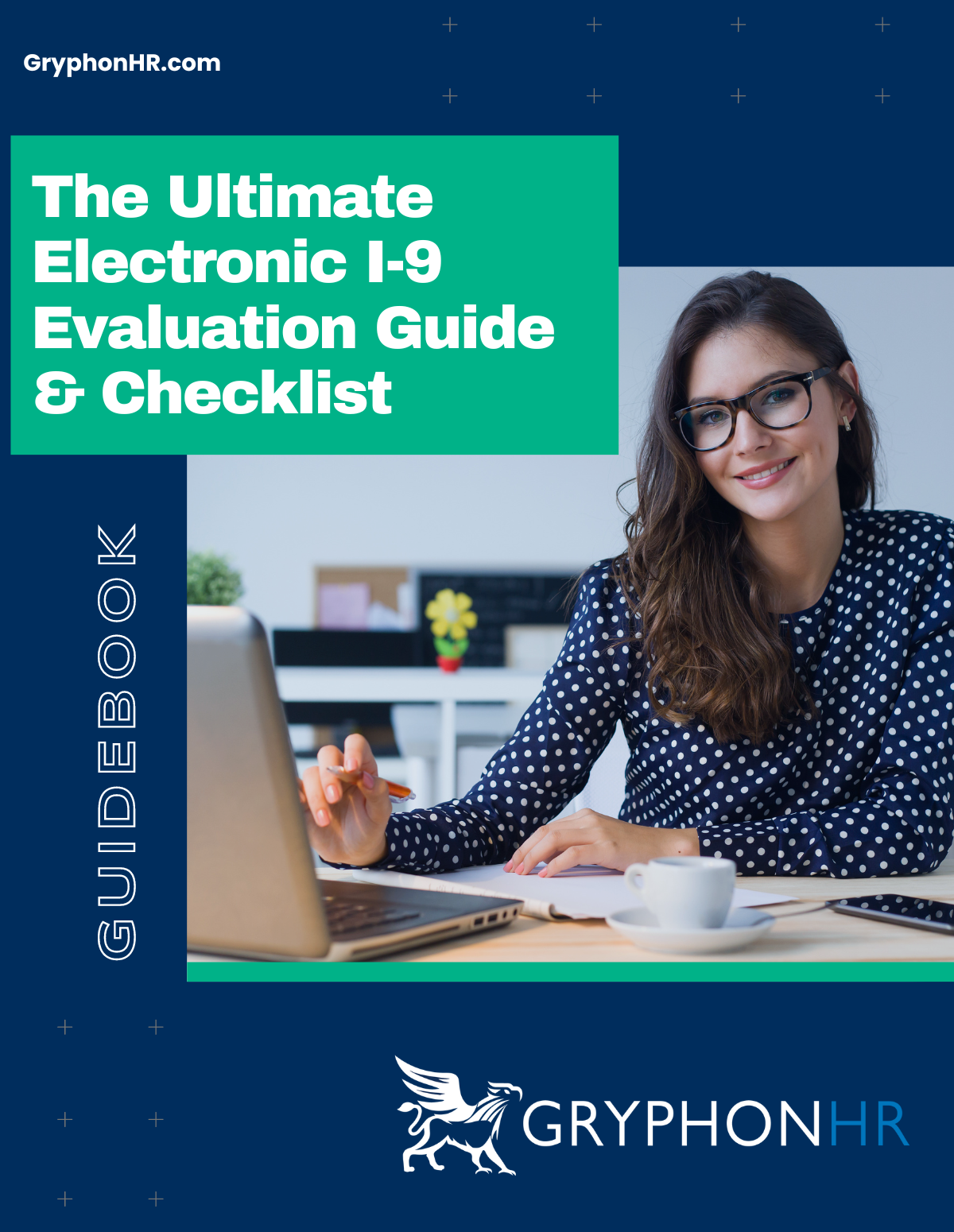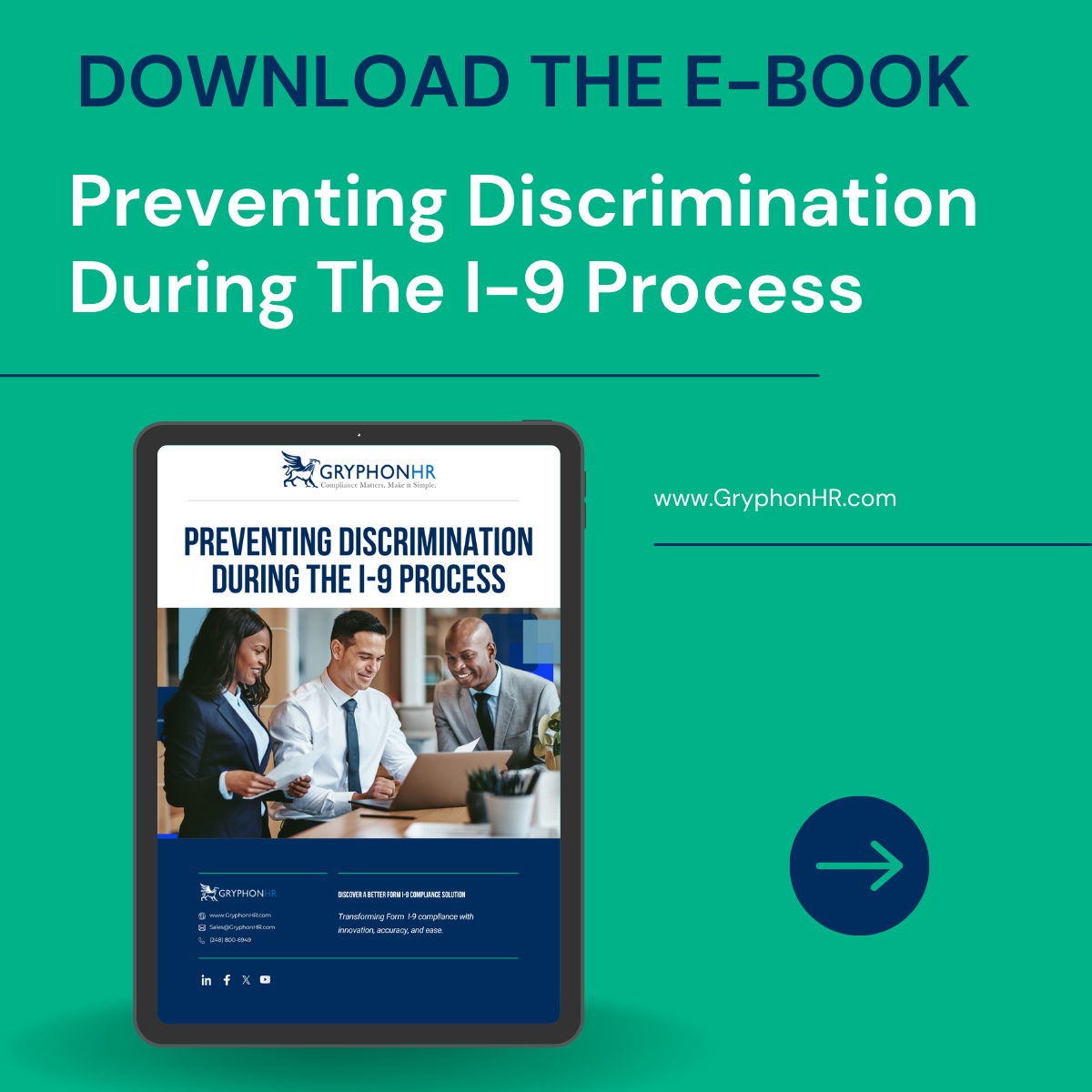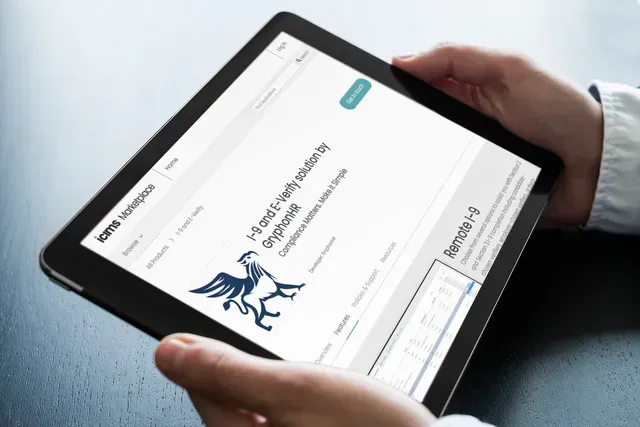Authored By: GryphonHR Blog Contributor
GryphonHR blog contributors include , consultants, researchers, and other subject-matter experts who’ve written content for our blog.
January 9, 2025
In today’s complex regulatory environment, employers must prioritize compliance with various labor and immigration laws, especially when it comes to verifying the identity and work eligibility of employees. The Form I-9, required by U.S. Citizenship and Immigration Services (USCIS), is a crucial document for ensuring that employers are hiring individuals who are authorized to work in the United States. Regular I-9 audits are essential to avoid costly penalties, ensure workforce compliance, and streamline the hiring process.
Before embarking on an I-9 audit, it’s important to have a thorough understanding of the requirements associated with the form. The Form I-9 must be completed for every employee hired after November 6, 1986, and must be retained for at least three years after the date of hire, or for one year after the employee’s employment is terminated—whichever is later.
The form is divided into three sections:
The forms must be accurately completed, and the documentation provided by employees should be examined and verified. Incomplete or incorrect forms can lead to penalties.
An I-9 audit begins with preparation. To ensure you conduct a smooth and effective audit, follow these steps:
Start by evaluating your current I-9 procedures. Ensure that your HR team or hiring managers are consistently following proper protocol for completing the forms. A clear, documented process for filling out I-9s and managing records is crucial.
If you rely on paper forms, consider transitioning to an electronic I-9 solution, which streamlines data collection, reduces human error, and provides a centralized location for managing I-9 forms.
For the audit, you’ll need to collect all current and past employees’ I-9 forms. If you’re using a digital system, this should be a straightforward process. Otherwise, gather all the physical files, which may include additional paperwork like copies of supporting documents for each employee.
Organize the documents by hire date or employee group to ensure a structured audit process. Be sure to include any I-9 forms for employees who have left your organization, as their forms must be retained for the legally required time.
Depending on the size of your organization, you may need a dedicated team to handle the I-9 audit. For smaller organizations, HR personnel or a compliance officer might suffice. For larger businesses, consider hiring an external consultant or law firm specializing in immigration compliance.
Ensure that the team understands the regulations around the I-9 process and is equipped with tools, like checklists or I-9 software, to guide them through the audit.
Once you’ve gathered the necessary materials and formed your audit team, it’s time to dive into the audit process. The audit involves reviewing all I-9 forms and identifying discrepancies, errors, or missing information.
Examine each I-9 form to ensure the following:
Common mistakes include missing or incorrect document numbers, incorrect document expiration dates, failure to reverify work authorization, and missing signatures.
It’s essential to ensure that the documents submitted by employees for identity and work authorization are legitimate and match the details on the I-9 form. Be cautious of any discrepancies in the documents or signs that the documents may be fraudulent.
Employers are not required to be experts in document verification, but they should be familiar with what constitutes acceptable documents and ensure they match the categories listed in the I-9 form. The USCIS provides a Handbook for Employers to guide document verification.
When you identify errors or omissions, document each instance and correct the issue. Some errors can be easily corrected by updating the form, while others might require more complex adjustments. If the error is severe, such as hiring someone who is not authorized to work, consult legal counsel immediately.
If an employee is no longer with the company and the form is incomplete, it may be necessary to create a new, corrected I-9 if the record-keeping requirement is still in effect. However, if the employee has already left, and the form is beyond the retention period, the document may be discarded.
Once the audit is complete, compile a report detailing the findings, including any non-compliance issues or patterns you’ve observed. Share this report with relevant stakeholders, such as HR leaders or legal counsel.
For any discrepancies or errors found during the audit, it’s important to take corrective actions, such as:
If serious violations are discovered (e.g., intentional misrepresentation or hiring unauthorized workers), you may need to consider voluntary self-disclosure to authorities, or take steps to rectify the situation to mitigate potential fines or penalties.
An audit can reveal weaknesses in your internal processes. Use the findings from the audit to improve future I-9 compliance. Consider implementing the following:
Conducting a thorough I-9 audit is essential for maintaining compliance with federal immigration laws. By preparing properly, checking for errors, and taking corrective action when necessary, you can minimize the risk of penalties and ensure that your hiring processes are as efficient and compliant as possible. Regular audits, coupled with proper training and updated technology, will help you maintain long-term compliance and avoid costly mistakes.

Authored By: GryphonHR Blog Contributor
GryphonHR blog contributors include , consultants, researchers, and other subject-matter experts who’ve written content for our blog.
Stay updated on Form I-9 and E-Verify!


Is your I-9 compliance software placing you at risk? Learn more about the compliance requirements for electronic I-9 systems and how to evaluate important features. Skip the form and download this interactive guide!

Avoiding discrimination during the Form I-9 process is critical to preventing liability, hefty fines, and unfair hiring practices. Download our free e-book to learn more.


MENU
STAY CONNECTED
Join our newsletter to learn more about Form I-9.